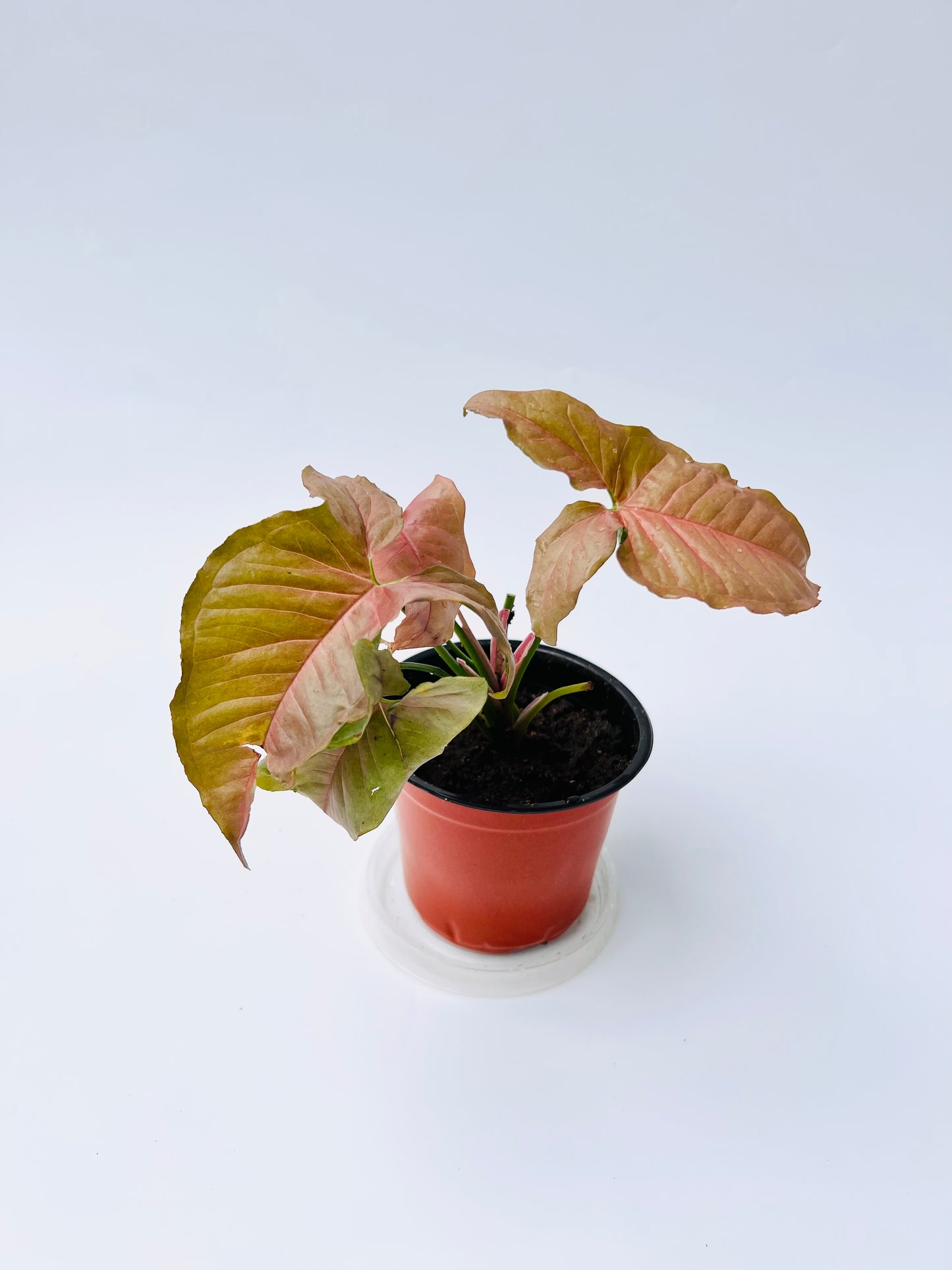Eudanafarms
Pink Syngonium Seedling
Pink Syngonium Seedling
Couldn't load pickup availability
Lagos delivery only.
❗Choose urgent delivery❗
Note: Images are for display purposes only. The actual plant you receive may differ in size and shape.
Syngonium plants, also known as arrowhead plants are popular for their attractive foliage and ease of care. Here’s a comprehensive care guide covering each aspect of caring for Syngonium plants:
Site Selection:
- Light:Syngonium plants prefer bright, indirect light. They can tolerate lower light conditions but may not grow as vigorously or produce vibrant foliage.
- Temperature: Maintain temperatures between 60-75°F (15-24°C). Avoid drafts and sudden temperature changes.
- Humidity: Moderate to high humidity is ideal. Regular misting or placing a humidifier nearby can help maintain humidity levels.
Soil Preparation:
- Use a well-draining potting mix rich in organic matter. A mix formulated for tropical plants or houseplants works well.
- Ensure the pot has drainage holes to prevent waterlogging.
Planting:
- Choose a pot with drainage holes that is slightly larger than the current root ball.
- Repot Syngonium plants every 1-2 years if needed, or when roots outgrow the pot.
- Gently loosen the roots when transplanting and plant at the same depth as the original pot.
Watering:
- Water Syngonium plants thoroughly when the top inch of soil feels dry.
- Allow excess water to drain away completely to prevent root rot.
- Reduce watering in winter when growth slows down.
Sunlight:
- Bright, indirect light is ideal for Syngonium plants. Avoid direct sunlight, especially intense afternoon sun, which can scorch the leaves.
- They can also adapt to lower light conditions, but growth may be slower.
Fertilizing:
- Feed Syngonium plants monthly during the growing season with a balanced fertilizer or rich compost.
- Reduce feeding in fall and winter when growth slows down.
Mulching:
- Mulching is not necessary for indoor Syngonium plants.
Pest and Disease Management:
- Syngonium plants are generally resistant to pests but can occasionally attract spider mites, mealybugs, or aphids.
- Inspect regularly for pests, especially under leaves and along stems.
- Treat infestations with insecticidal soap or neem oil as needed.
- Maintain good air circulation around plants to prevent fungal issues.
Propagation:
- Propagate Syngonium plants through stem cuttings
- Cut 4-6 inch sections of healthy stems with at least one leaf node.
- Place cuttings in water or directly in moist potting mix until roots develop.
- Transplant rooted cuttings into individual pots once established.
Maintenance:
- Remove yellow or dead leaves regularly to maintain plant health and appearance.
- Prune back leggy growth to encourage bushier growth.
- Wipe leaves occasionally with a damp cloth to remove dust and keep foliage clean.
Harvesting:
- Syngonium plants are grown for their foliage and do not produce edible fruits or flowers for harvesting.
By following these care guidelines, you can successfully grow and maintain Syngonium plants indoors, enjoying their attractive foliage and easy-going nature. They are versatile and can thrive in various indoor conditions with proper care.
1.0 / 5.0
(0) 0 total reviews
Share


